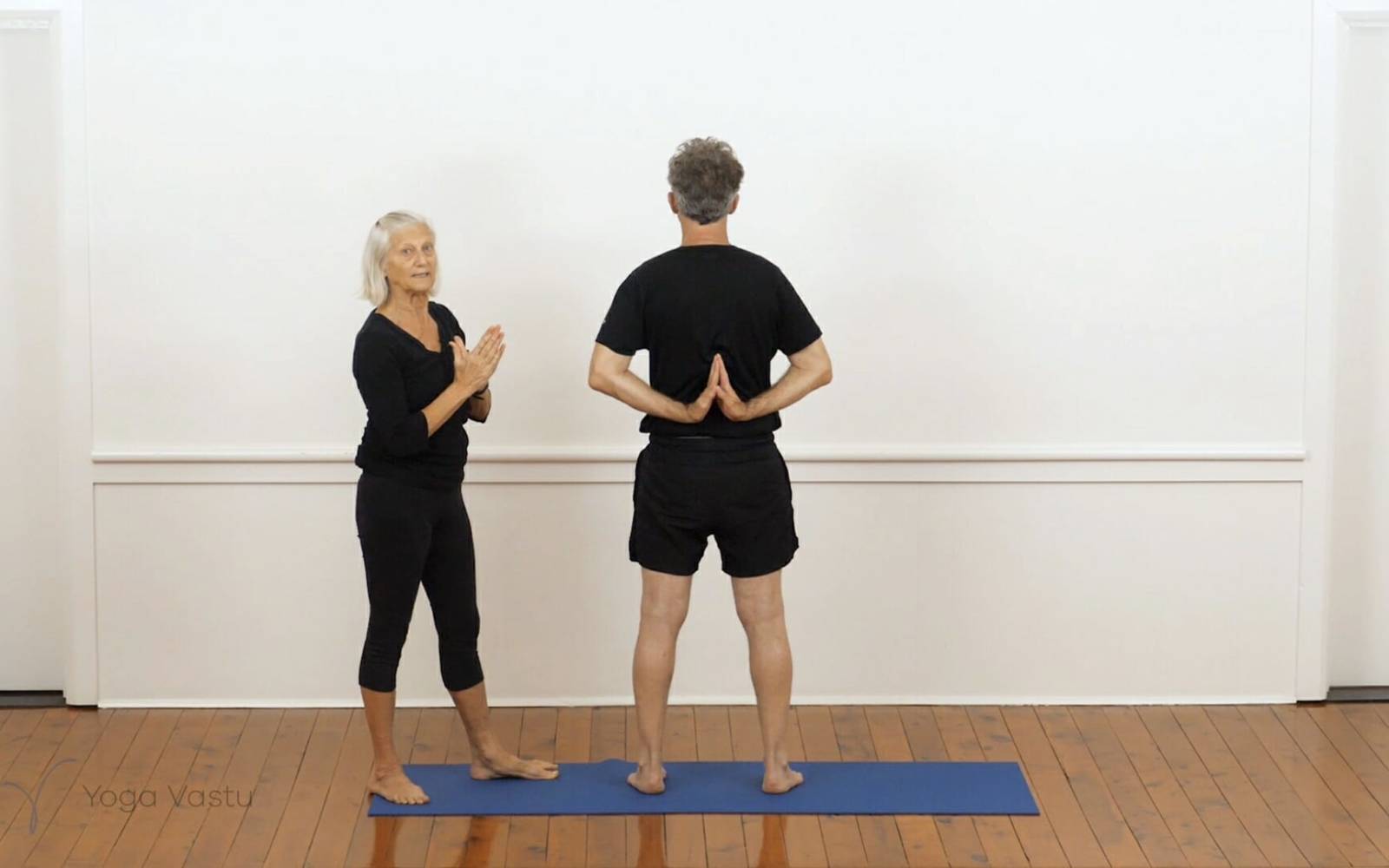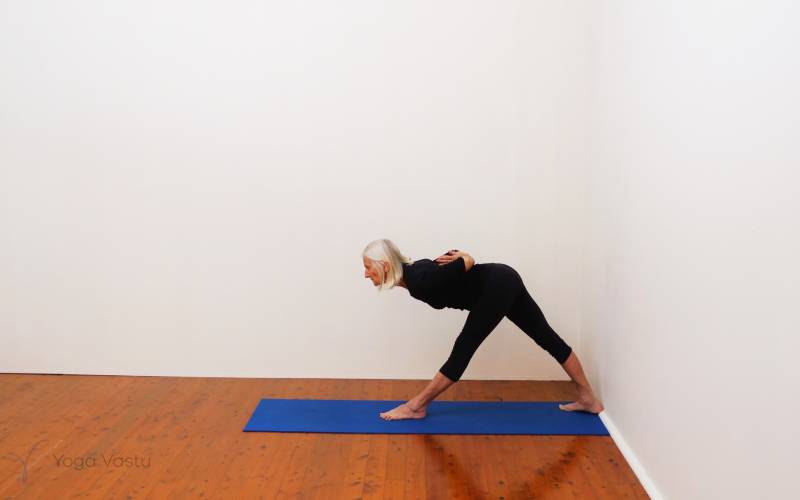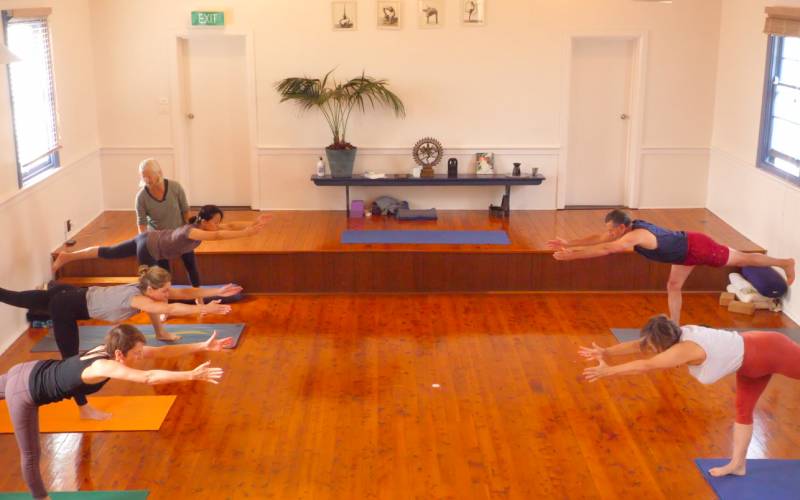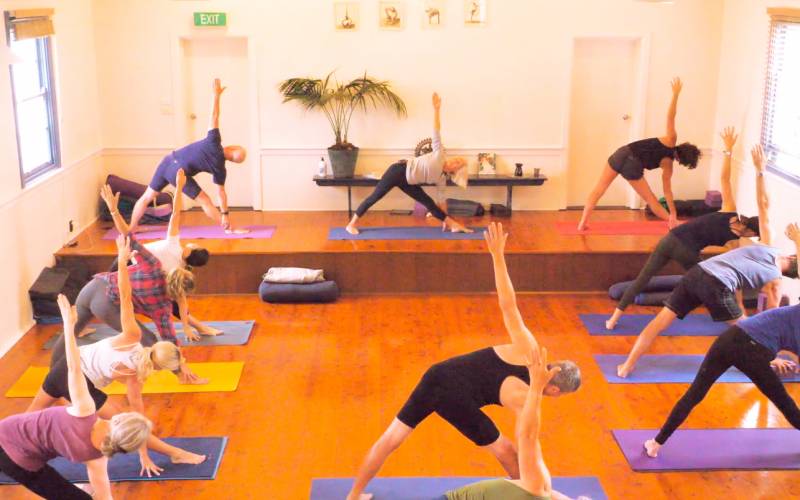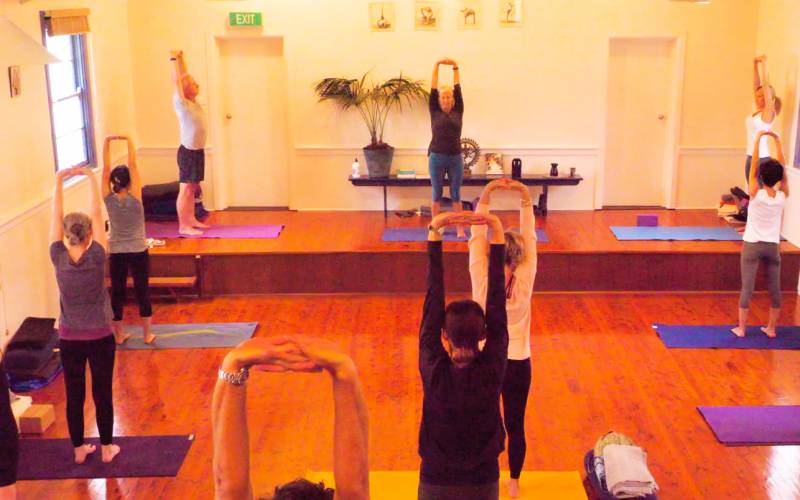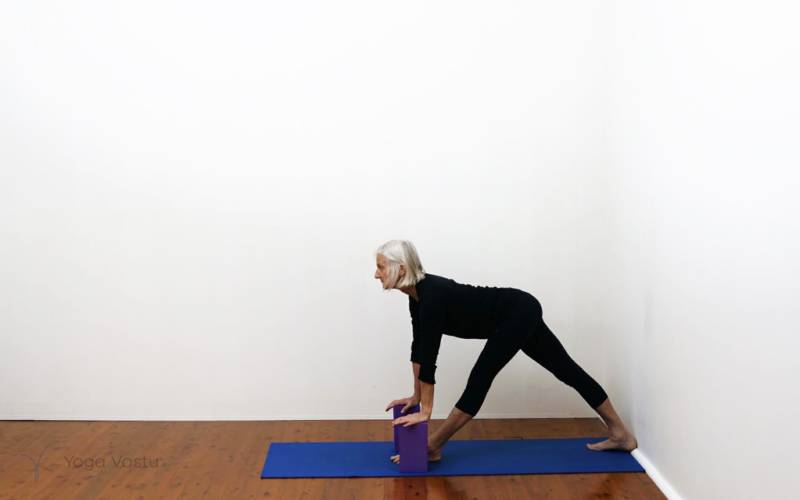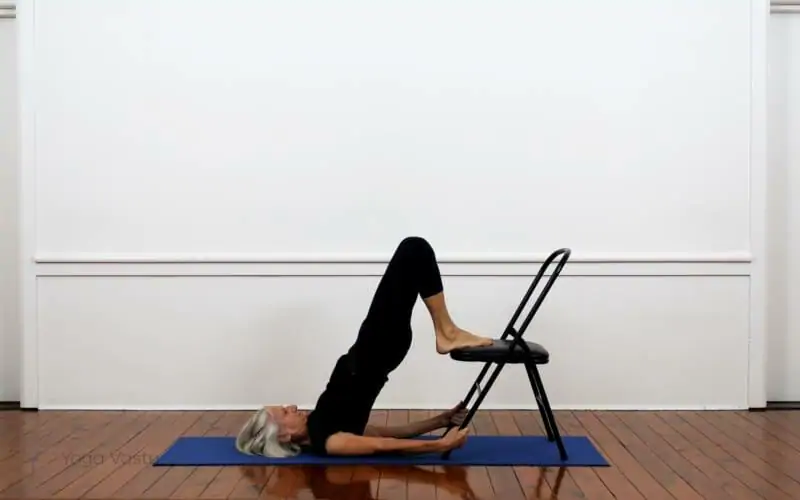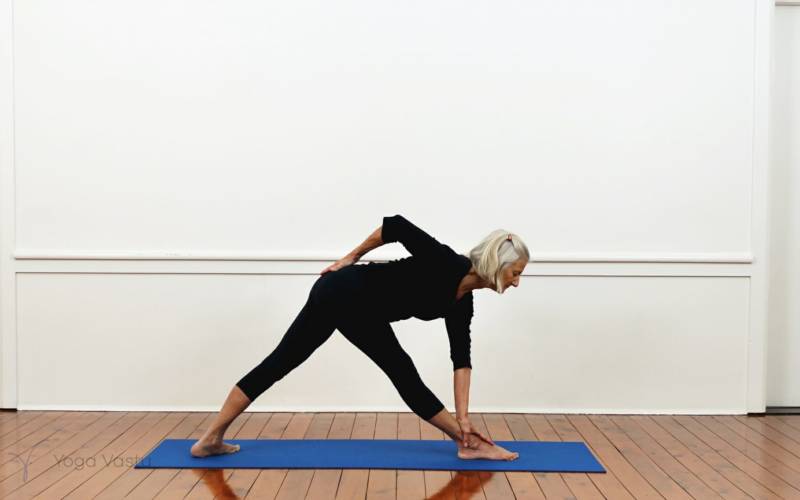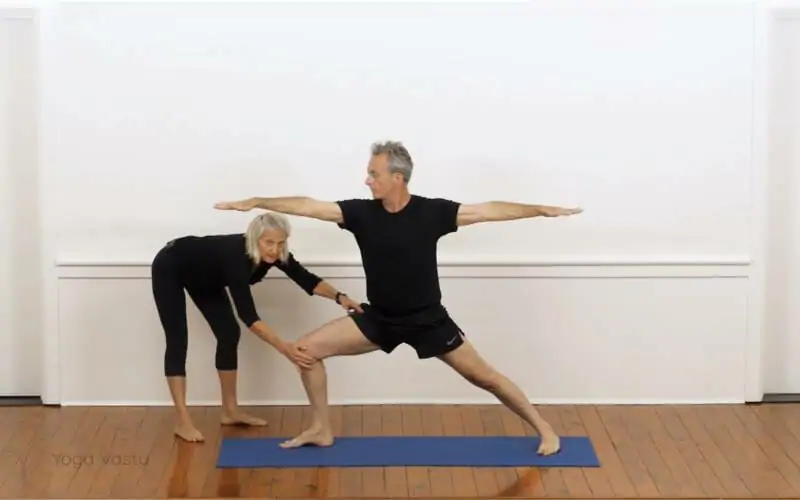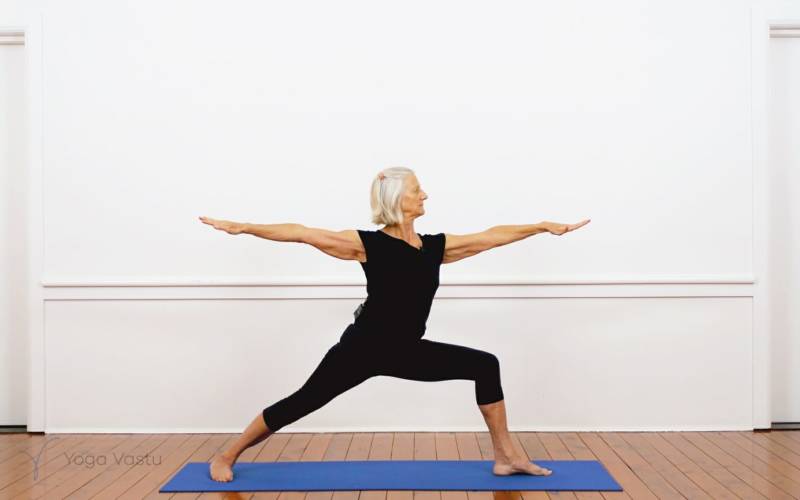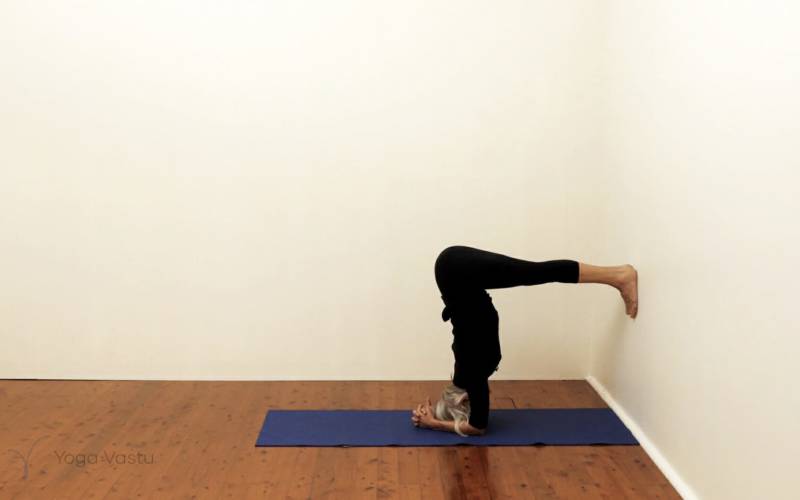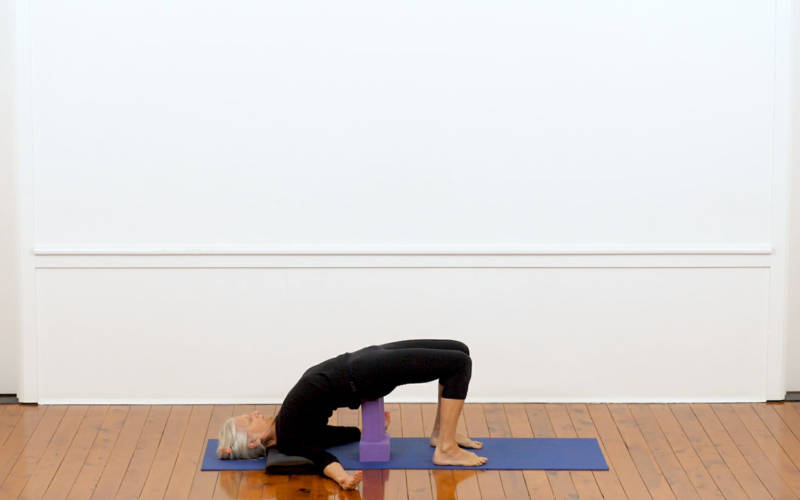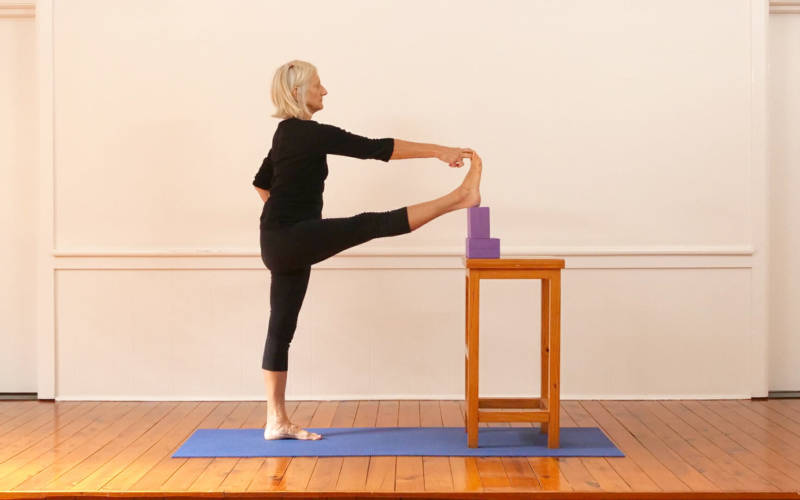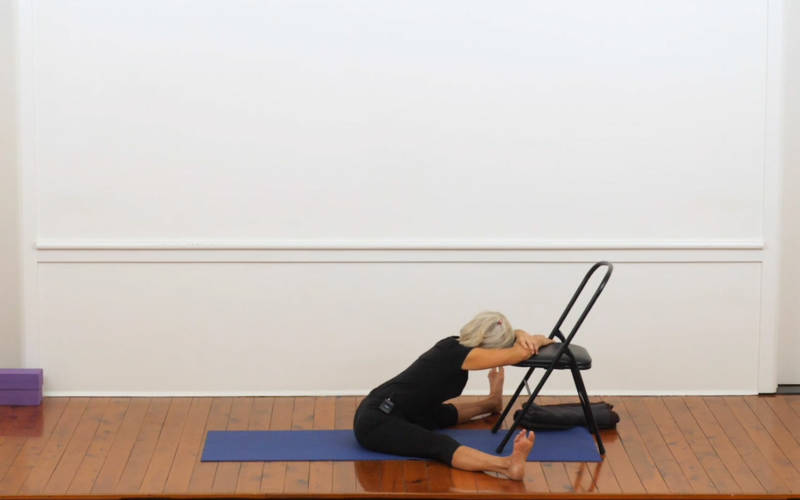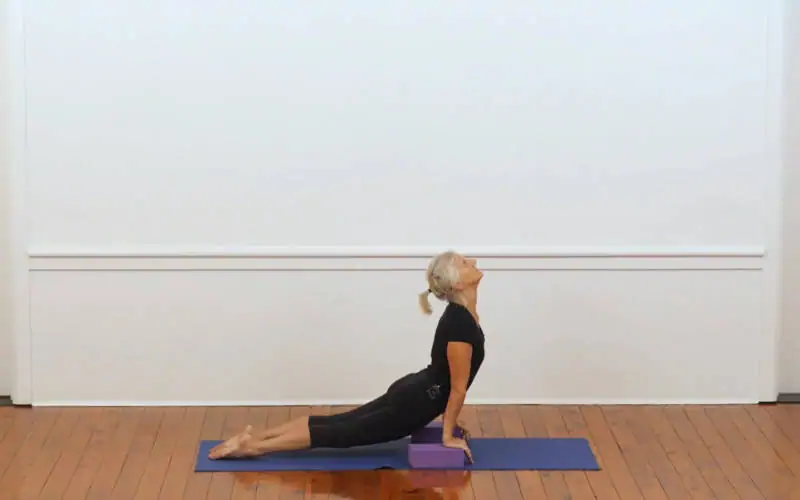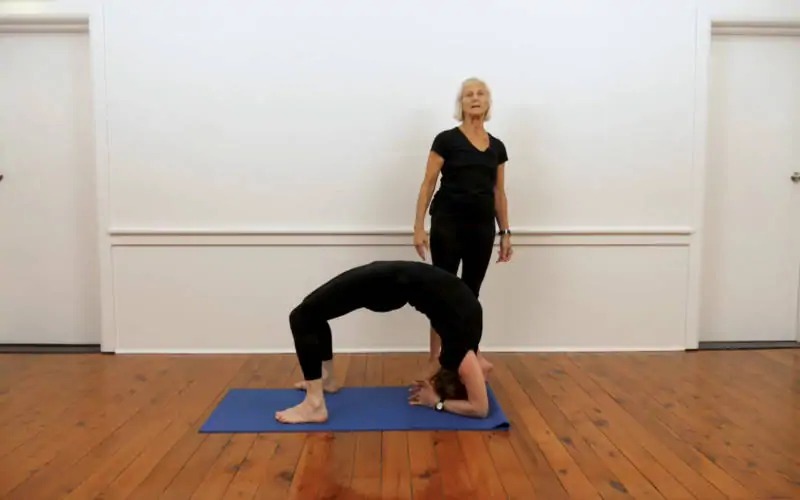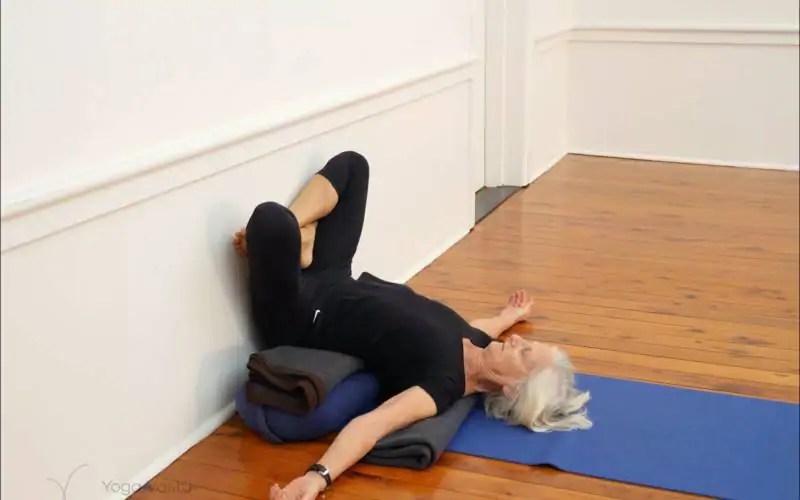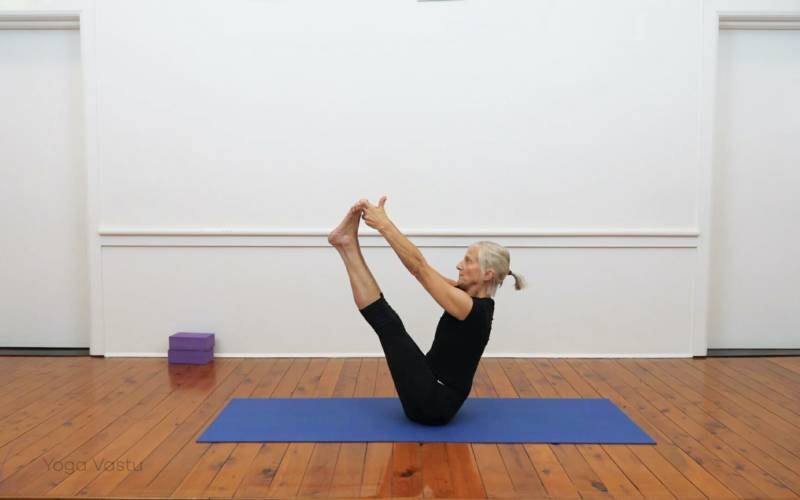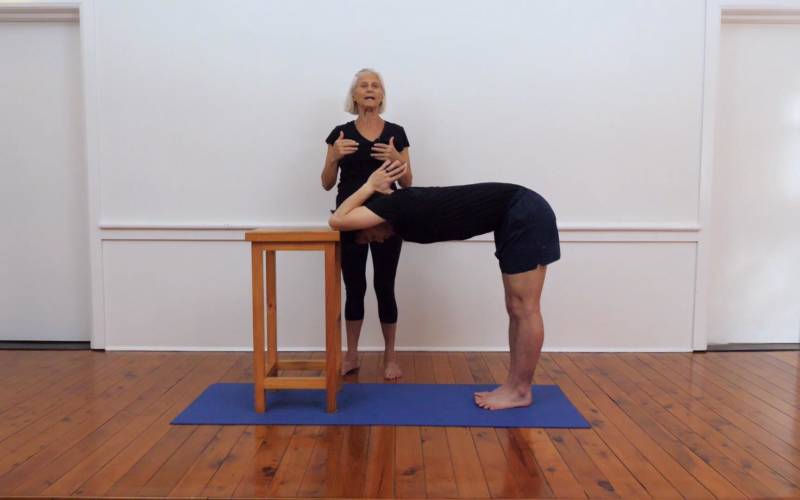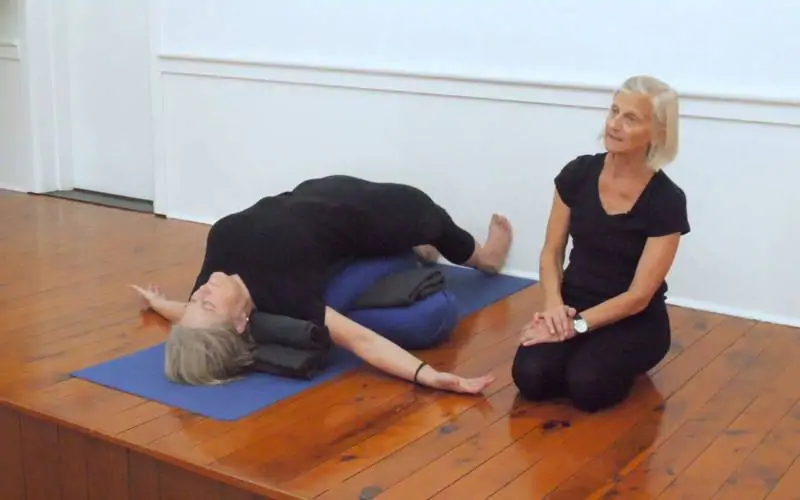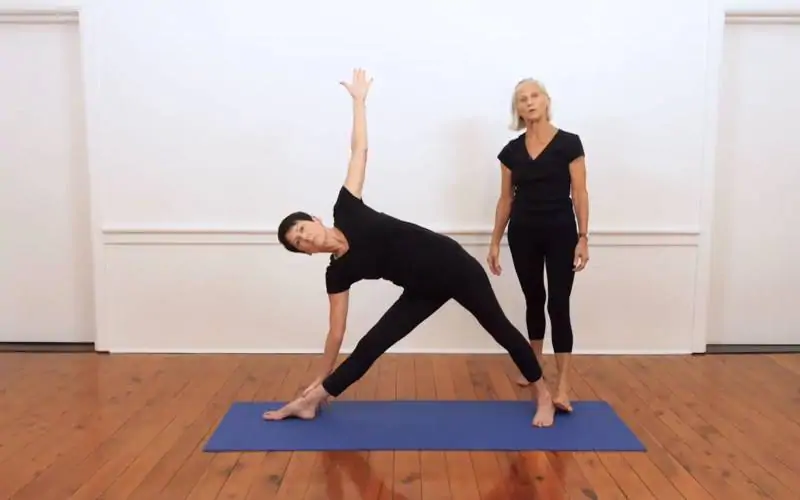How to perform Reverse Prayer Pose
Stand in Tadasana and spread your arms outward. Then bring your hands behind your back, join your palms together, and walk them up to capacity. If you lack wrist mobility, you can also simply grab hold of your elbows.
What is Paschima Namaskar?
Paschima Namaskar or Reverse Prayer is a universal shoulder-opening posture that can be practiced almost anywhere and can be coupled with practically any pose. It is also a good form of preparation for such wrist-heavy poses as Vasisthasana.
As you stand in Tadasana, sit in Virasana, or assume any other posture of your choice, join your hands together in prayer behind your back, and start to walk your little fingers up along your spine, aiming to reach the area between your shoulder blades. To ensure you get the full benefit of this pose, roll your shoulders back and draw them down towards your elbows. Meanwhile, keep an eye on the rest of your body, don’t let your middle sink in, keep your sternum and chest aligned over the navel.
If joining your palms together this way is too challenging, you can simply clasp your elbows.
When to use Paschima Namaskar?
You can use this exercise to help you prepare for more complicated poses requiring shoulder strength and mobility (like Sirsasana or Shoulderstand). It can be used on its own or can be incorporated into a range of different standing poses as a way of making them more challenging.
It offers the practitioner a great way to increase shoulder mobility, wrist strength and flexibility, and to promote health in your spine. It also serves as a great way of opening up your chest, making it easier for you to take deeper fuller breaths.
However, it can be quite challenging for someone with excess tightness in their shoulders, neck, arms, or wrists and should, in that case, be substituted for a simpler variation to avoid injury.
